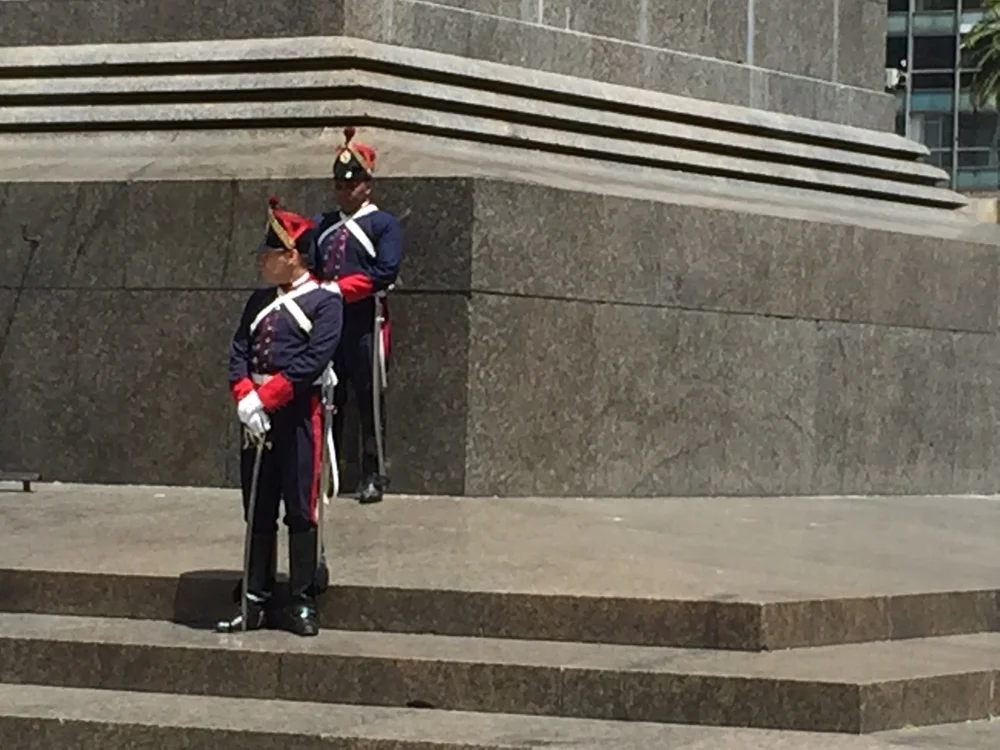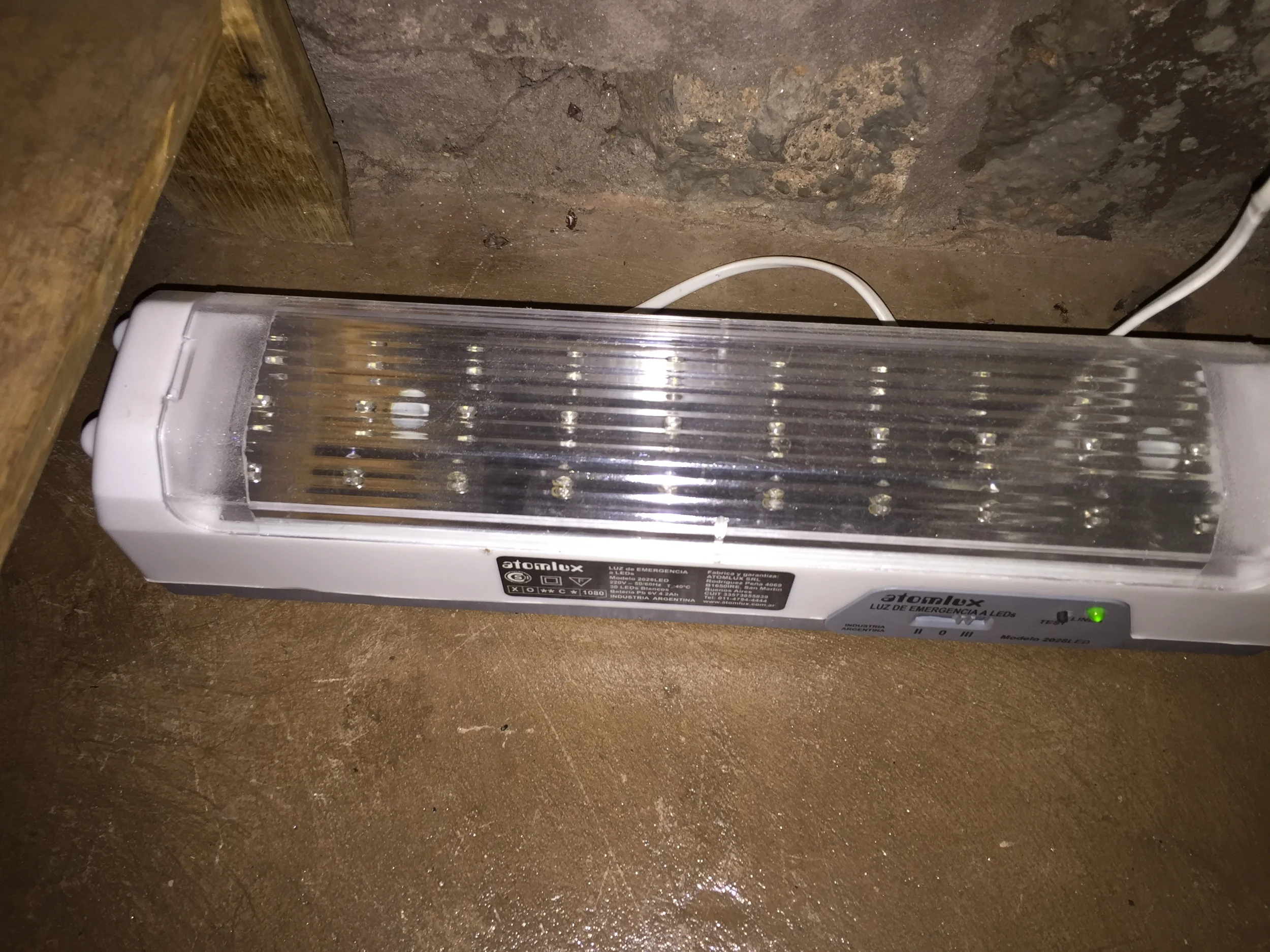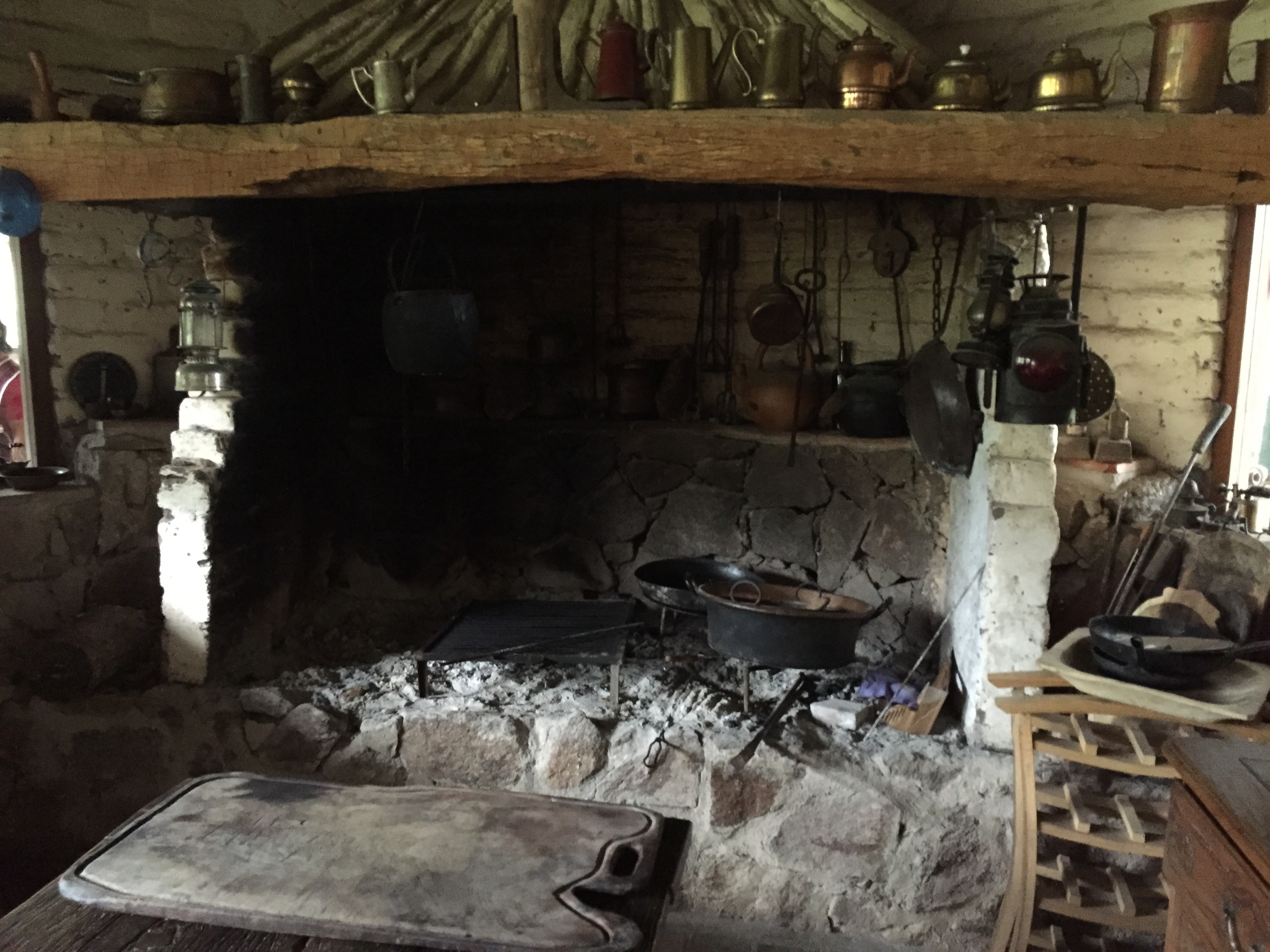Argentina - November, 2015
(Written in November, 2015)
In November, 2015 Misti and I took a three-week trip to Argentina which included several days in Uruguay and Santiago, Chile. This was our third trip to Argentina, the first in 1998 and the second in 2007.
Days at home were getting shorter, weather cooler and we were itching for a trip. Europe was cold and we had recently gone to Asia and Australia, so we looked south. It was the beginning of summer in Argentina and we’d have five hours more daylight, which is great since longer sunny days trump shorter, cold ones. Also, we learned online that because of Argentina’s severe fiscal problems, the dollar was bringing a sixty percent premium.
It was just before the Argentinian presidential election of 2015, and we saw posters everywhere for the two candidates: Scioli, who was on the left, affiliated with what was the incumbent Kirschner administration (a holdover from Juan Peron days). His opponent was Macri, the “new guy,” a conservative businessman and mayor of Buenos Aires.
People seemed disillusioned with the current administration. With an inflation rate of thirty percent, high unemployment and runaway welfare programs, people wanted a change. The election was held on November 22, four days after we left Argentina, and the results are historic. The conservative candidate, Macri, won and Argentina became the only South American country to have a conservative president.
But first about our previous two visits to Argentina. During our first trip, in 1998, we explored the southern and northern parts of the country, using an Aerolíneas Argentinas Air Pass that enabled us to fly to multiple locations throughout the country for one fare. We used Buenos Aires as a base, flying first to Ushuaia, the southernmost city in South America, located at the tip of the Tierra del Fuego archipelago, then making our way north through Torres de Paine (in southern Chile) to Bariloche in the Argentinian Lake region.
A highlight was a day spent on the Cruz de Lagos (crossing the lakes) where we traversed the Andes on several buses and boats, going from Puerto Varas in Chile to Bariloche in Argentina. It was a clear, sunny day, the lakes were brilliant blue and the towering snow-capped volcanoes stood as sentinels as we spent the day marveling at a landscape seemingly untouched by man.
After two days in Bariloche we flew north to Mendoza, in the heart of Argentina’s wine country. This was our first visit to this charming city and we loved its leaf-lined streets, lovely plazas with colored fountains and, of course, the many bodegas (wineries). We stayed in a hotel on Plaza Independencia with a balcony overlooking the plaza and, as I closed my eyes, I could imagine Evita on the balcony giving a passionate speech to her descamisados (shirtless ones).
It was our thirty-fourth wedding anniversary and we celebrated with dinner and wine at a nearby Argentinian restaurant. I was so taken with the meal, the wine, the excellent service- and being with my wonderful wife - that I gave the waiter a hundred dollar tip which was probably several days salary.
From Mendoza we flew back to Buenos Aires for a few days and then flew home.
Our second trip through Argentina, in 2007, was very different and was an extension of a trip we started in Santiago, Chile. After renting a Suzuki jeep and driving eight hundred miles north from Santiago to Antofagasta, we decided to enter Argentina through the Paso de Jama, the northernmost Andes crossing between Chile and Argentina, that reaches an altitude of 16,000 feet. Misti was concerned about the lack of oxygen at that height, so we purchased two oxygen bottles in San Pedro de Atacama, a common item there for Andes backpackers.
We had gotten a Chilean visa before leaving home, which greatly facilitated the crossing. Even though my Spanish is decent, border crossings are often a mystery, but we’ve found that a US passport and a ten dollar bill go a long ways toward simplifying the process. We arrived in Argentina after an eight hour crossing of the Andes. Northern Chile and Argentina are very secluded, with Quecheua Indians selling their crafts along the road amid spectacular Andean mountain scenery, perhaps the most beautiful scenery we've ever seen. We saw wild herds of llamas, strange looking birds and vicunas and foxes that came right up to our car door.
Our first city in Argentina was San Sebastian de Jujuy, in north central Argentina, near the northernmost part of the legendary Ruta Cuarenta, which we had read about in Lonely Planet. Route 40, which Argentinians fondly refer to as “The Forty,” is the longest highway in Argentina and one of the longest in the world, stretching more than 5,000 km from the Bolivian border to Rio Gallegos in Patagonia. It crosses 28 national parks,18 major rivers and 27 Andean passes. A large part of the road is unpaved and the road is known worldwide as a four-wheelers paradise.
From Jujuy we drove on to Salta and then made our way south on route 40 toward Mendoza. Along the way we stayed at Cafayette and La Rioja, both small towns that served only as places where we could find food and lodgings.
Mendoza was about half way through our trip and we stayed two nights, enjoying excellent Argentinian food and wine and exploring the surrounding wine countryside. This trip gave me a new respect for both Chilean and Argentinean wine. We never had a bad bottle and the wines lean more toward the taste of Spanish and Italian than California. They’re good and sold at ridiculously low prices, like $4 to $8 a bottle.
From Mendoza we continued south, through a desolate part of Argentina, with our destination being the border crossing of Paso Mamuil Malal, which would take us back into Chile. We underestimated the distance involved, as well as the fact that there were no towns where we could spend the night. We drove 430 miles to a small and nondescript town called 25 de Mayo, an oasis in the middle of nowhere where we found food and lodging.
We crossed the border from Argentina to Chile and spent the night at Curacautin, which means “Gathering Stone” in the Mapadungun language, and is located near three volcanoes (Tolhuaca, Longuimay and Llaima). We spent the next two nights at the wonderful Hotel Antumalal in Pucon, a major town in Chile’s Lake Region, which we just happened upon, and were able to snag a deluxe room overlooking the lake.
And now, about our most recent 2015 trip to Argentina, which focused on a part of the country we had not yet visited: the central portion including Cordoba.
We flew into Buenos Aires, one of our favorite cities in the world, which many consider to be the Paris or New York of Latin America. It’s an exciting city with a bustling population of four million, grand boulevards, plazas and parks everywhere and, in the Latin manner, nightlife begins late and goes through the night. As we did on our previous visit to Buenos Aires, we spent several hours in Recoleta Cemetery where famous and infamous political and military dignitaries, including Eva Peron (Evita) are buried.
Buenos Aires has many top notch restaurants which compete with the best the world has to offer. Using the internet, and recommendations from our hotel concierge, we had some memorable dinners. The five hour time difference between California and Argentina put us on a late dining schedule, but we were still always the first to arrive at restaurants which opened at eight or nine PM. That worked well since we always got the best table and attentive service.
Being in Argentina at a time when the US dollar was exceptionally strong was a big plus. There was what they call a “blue market” for money exchange (like a black market). Because they were expecting a currency devaluation after the presidential election, everyone was rushing to trade their pesos for US dollars.
The exchange rate, or “cambio,” changed every day and was headline news in all the newspapers. The official exchange rate at banks, ATM’s or for credit cards was 9.5 pesos to one dollar. The rate we usually got was 15, so 100 US dollars gave us 1500 pesos rather than 950 at the official rate. That’s about a sixty percent discount and made traveling in Argentina a real bargain. We never used a credit card, ATM or went to a bank. We got pesos at hotels, restaurants and on the street, and we had known in advance to bring a good supply of US hundred dollar bills, which commanded the best rate. We paid for everything, including hotels and car rental, with our discounted pesos. The largest peso bill is one hundred (about seven dollars) so our pockets were bulging with peso notes.
We stayed four nights at the Hotel Alvenear Arts in Recoleta and then, after four days of sightseeing, shopping and great dinners, we crossed the Rio Plato for a three day side trip to Uruguay, a country we had never visited. After three days in Uruguay we ferried back to Buenos Aires where we spent another two nights, then rented a car and drove two hundred miles to Rosario, which is half way to Cordoba, the second largest city in Argentina.
On previous visits we had seen most other parts of Argentina and Cordoba, in the central part of the country, piqued our curiosity. It’s not nearly as sophisticated as Buenos Aires but still offers plenty to see and do. There are many colonial buildings dating from the sixteenth century, some good museums, and many good restaurants. Misti got us a great boutique hotel, Azur Real, and they upgraded us to the nicest room they had. One night we ate in an outstanding seafood restaurant called “La Chernia, El Chucho y La Cholga.” We thought this was an unusual name and guessed it was the names of the owners. Wrong. We asked and were told it was the names of three local fish from the Parana River.
While the weather was generally quite mild, with temperatures in the mid seventies, in Cordoba we did experience a “tormento” which is Spanish for storm. It was at night, with lots of thunder and lightning, and resulted in our staying a third night in Cordoba because many of the roads were too flooded to drive.
From Cordoba we drove several hours into the Central Sierras, an area somewhat similar to California’s Tahoe, but on a more modest scale. We stayed two nights in the town of San Javier at a small bodega (in Argentina bodega means winery but the word is also used to mean a small store). Las Jarillas, where we stayed, was hidden away in the back country, very tranquil and picturesque with the mountains shrouded in clouds. The owner, who had studied wine in Italy and France, gave us a private tour and we tasted his excellent reds which were inexpensive (six dollars a bottle) and we thought they were as good as many of California’s more pricey wines.
We reluctantly left the Central Sierras for the six hour drive southwest to Mendoza, which we had last visited in 2007 and were anxious to see again. Mendoza lies on the eastern side of the Andes Mountains, which separate Argentina from Chile, and is renowned as a world-class wine region with 1500 or so wineries, and is especially noted for its Malbec vintage. Wine tasting wasn’t the primary reason for our visit; we had fond memories of Mendoza and this time it exceeded our expectations.
We spent three nights, and I must say that next to Buenos Aires, it’s our favorite Argentinian city. It’s much smaller but, with its tree-lined boulevards and many plazas, it’s a very charming city. We stayed in a small hotel across from Plaza Chile, just a few blocks from Plaza Independencia, the central part of Mendoza. We spent one day exploring the town and the next day drove to two wineries in Maipu. Being a Sunday many of the wineries were closed, but the hotel clerk told us about several that were open and with Misti’s trusty GPS, we went right to them.
At the first winery we met a young couple from Sydney who were bumming around Argentina by train and bus; we chatted with them and invited them to join us. They were thrilled that we had a car, and when we arrived at the next bodega, ten minutes later, they said it took them four hours by bus to get to the winery where we met them. Knowing they had limited funds, we bought them lunch and then drove them back to Mendoza.
The winery was owned and run by a French couple who had migrated to Argentina many years ago and brought their winemaking skills with them. The guy spoke reasonably good English and was the winemaker; his wife was in charge of the tasting room and spoke almost no English, so we communicated in Spanish with a bit of French thrown in. A fun and memorable experience.
We had planned to spend our last two nights in Santiago, Chile and fly home from there. That meant we had to get from Mendoza to Santiago, a distance of only about 150 miles by road, but it meant crossing the Andes at the Paso Libertadores, which reaches an altitude of 10,500 feet. Eight years ago, on a previous trip to Chile, we had made two Andes border crossings into and out of Argentina. We recalled the scenery as being breathtaking, but the border crossings with immigration and customs were a nightmare. For that reason we decided to hire a car (actually a small bus) and driver in Mendoza for the nine hour crossing.
It was a good decision because the truck traffic was non-ending, there must have been ten thousand blind curves and the border crossing was much easier since the driver helped us fill out the forms and get in the right lines. He said he had been making the crossing for the past five years and knew the immigration and customs people. It was fun having our own Mercedes bus and driver for just the two of us and the price wasn’t outrageous.
The scenery was spectacular and even though it was close to summer, there was lots of snow and some glaciers. A highlight was lunch at the Hotel Portillo, a ski resort near the summit with a beautiful dining room. We felt like king and queen dining on excellent local seafood in this elegant hotel with no one else in sight, with our table having a magnificent view of the glaciers and thermal lake.
I like Santiago a lot. It’s smaller than Buenos Aires but has a nice feel and flavor. It ‘s very cosmopolitan, but at the same time is comfortable. I could easily have spent another week there, especially since it was light until almost nine pm. We stayed in the barrio (neighborhood) called Lastarria which has many nice restaurants, bars and hotels and is a good area for strolling. With Misti’s online diligence we got a great boutique hotel called Lastarria.
In Lonely Planet we learned about the Mercado Central, which has scores of small restaurants serving mariscos and pescados (shellfish and fish), much like the seafood markets in Sydney and Fremantle, Australia. We liked it so much we made a return visit the next day. Outstanding seafood, very atmospheric, a fun experience and not expensive.
On another night we had dinner at a little tapas restaurant which was a touch of Spain. As in Madrid, we sat at the counter and had a bottle of good Chilean tinto (red wine) and several tapas. We met two British ladies, Jan and Ruth, and I had a spirited political conversation with Jan - she being a staunch liberal and me being on the other side.
Our trip ended after two nights in Santiago, not nearly enough time. We returned home via Houston and, since it was just a few days after the terrorist attack in Paris, airport security was more intense than ever. We have global entry, which enables us to bypass regular U.S. immigration and customs, but with having to claim bags and go through Houston airport security with only a ninety-minute window, we barely had enough time to make our San Francisco flight.
While it was nice to come home, as it always is, we did miss the longer days and mild temperatures of an Argentine Spring.
Art Faibisch
November 28, 2015
































































































































